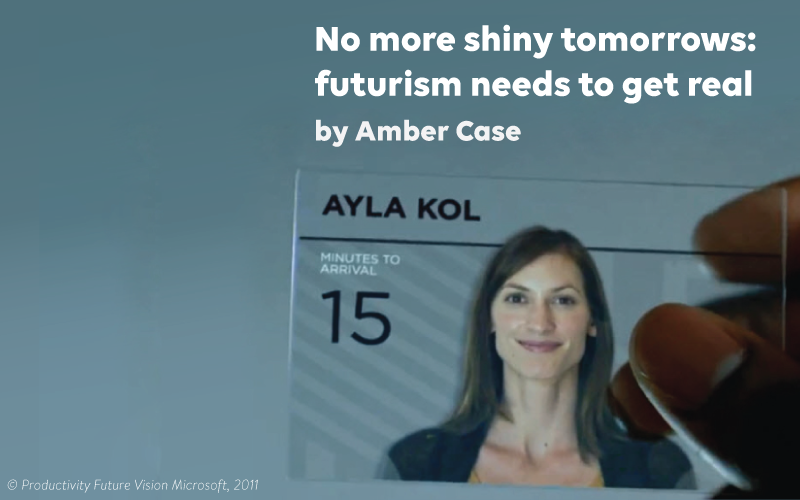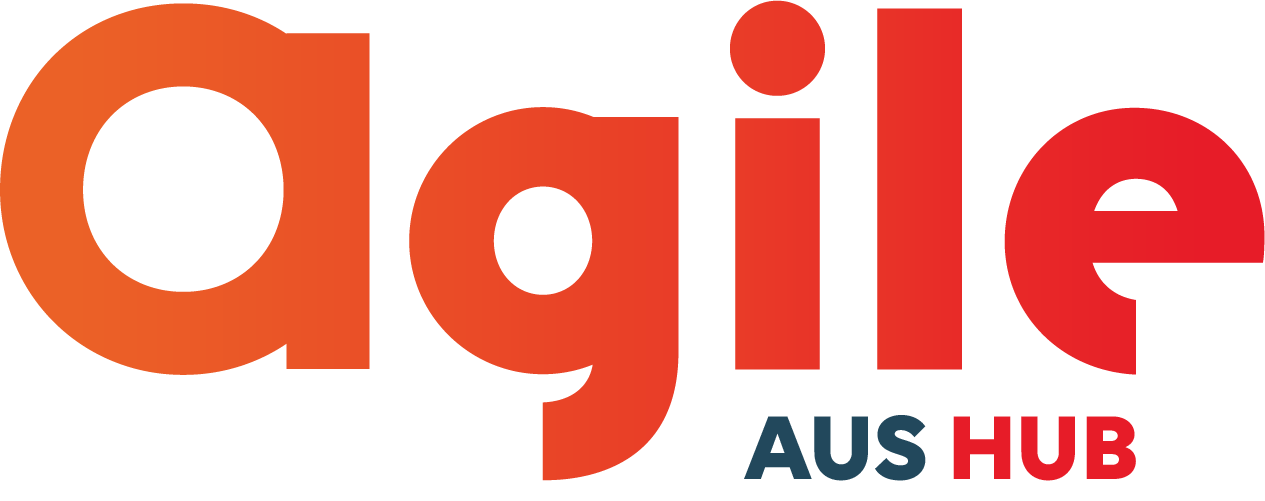
No more shiny tomorrows: futurism needs to get real
No matter the setting, shiny futurist scenarios are often the same: Perfect people in perfect settings, using tech that never fails. The world seemingly becomes more perfect with the addition of expensive, battery-intensive, and visually complex technology.
While these fantasies might seem benign, I believe their narratives are corroding the way we develop the future by distorting our perceptions of how we think the future will actually be implemented.
As alluded to in shiny future blog EmoTouchscreenFuture, most of these videos have something in common:
- Wealthy, clean landscapes
- A future where everyone is able-bodied
- No failures of any kind
- Screens, voice-activated interfaces, and people interacting at a distance
- Human-shaped robots doing the work of people.
Colleagues in the futurism industry may protest that their clients won’t pay for videos where the future is imperfect, but I’d argue imperfection is mandatory — not just on principle, but for the basic fact that a more realistic conception of the future will benefit those clients, as well.
Whenever I see a video featuring a shiny future, I like to ask the following questions:
- What happens when things go wrong?
- Are there back up technologies or humans ready to help?
- Are these humans happy, well-treated, or bored and “on pause”?
The Future is Mundane
We need to stop looking at what looks cool and focus on what works. And what works often looks boring.
Successful technologies dissolve into the everyday. They are convenient, like looking down and seeing an outlet next to your seat. It’s not advertised. It’s just there. Electricity is invisible. We toggle it with a light switch. The light switch is an extension of our fingertips. It’s there when we need it, and doesn’t call attention to itself when not. Compare this to Google Glass, or other intrusive technologies that call attention to themselves.
Middle Futurism: Bringing the Past to Life
What’s needed, I believe, is a new approach to forecasting the future that sits between the unsustainable techno-utopianism popular with Silicon Valley, and the dystopian imagery favored by pop culture. (Which is uninspiring, and only warns us what to avoid, not what to strive for.)
Ironically, a better way for thinking about our future comes from our relatively recent past. Much of the research at institutes like Xerox PARC in the 1980s that didn’t make it into today’s collective imagination. Bringing some of this back can help save us from building a future that is brittle, high cost, and impossible to maintain.
Call it middle futurism. It draws from the thought of PARC’s Mark Weiser, who wrote this in 1991:
The most profound technologies are those that disappear. They weave themselves into the fabric of everyday life until they are indistinguishable from it…Silicon-based information technology, in contrast, is far from having become part of the environment… The arcane aura that surrounds personal computers is not just a “user interface” problem… Such machines cannot truly make computing an integral, invisible part of the way people live their lives. Therefore we are trying to conceive a new way of thinking about computers in the world, one that takes into account the natural human environment and allows the computers themselves to vanish into the background.
Add “smartphones and smart devices” after “personal computers”, and we still face, nearly 30 years later, the same problem: Technology companies calling for computers to become more pervasive, more intrusive, but certainly not invisible — and futurists goading them along on this path.
Traditional futurists talk about disruption all of the time; middle futurism only advocates disruption that optimises our attention, involvement, and proximity to technology. Traditional futurists promote technology maximalism, perhaps best summarised by the motion-controlled UI depicted in Minority Report, which went on to inspire countless actual hardware products — even though it’s fundamentally impractical. Middle Futurism, by contrast, revives the PARC vision, describing a technological path that “takes into account the natural human environment”.
Five Principles for Middle Futurism
Regardless of what clients want to hear, it’s our responsibility as futurists to provide the full story, not just the good stuff. We need well-rounded futures that are filled with the acknowledgement that there are unintended consequences and suboptimal conditions. We should pay particular attention to how technological advances will likely exclude some people — and advocate solutions to make them more inclusive. Ethical futures work for all, not just a select few; they respect our precious, finite resource of time and attention, and help people flourish as fully realised humans.
So rather than blindly assume technology will somehow alter human nature for the better, middle futurism operates along these principles:
- A middle future is maintainable. Not just by the company that built it, but by the individuals who use it. There should be a sense of personal pride in being able to fix a system, and a long term job associated with it.
- A middle future is transparent. When the processes going on behind the scenes are invisible, we experience a Kafka-esque reality. If a computer’s “AI” is coming to the wrong conclusions, we should know, and be able to help fix it.
- A middle future allows for both chronos (structured) and kairos (in the moment) time, with a focus on optimizing for human time, not machine time.
- A middle future allows for empathy. It optimizes the best of tech and the best of humans.
- A middle future works for the long term — when an organization adopts a new technology, it should be robust enough to last decades, not just the next OS update.
From a design perspective, middle futurism researches the past for clues on how to make maintainable products at human scale — buildable and serviceable, where technology integrates with culture as it exists, rather than expecting culture to change.
Examples of Middle Future Product & System Design
- Middle future design enhances what we love with technology, instead of replacing it. For instance:
Japan is full of middle future products, such as sliding shōji doors. Instead of replacing them with Western, hinged doors, they kept the idea of sliding doors as they modernized, and turn them into automatic ones. - Light rails lines connecting cities without sprawl. (Roads are expensive to maintain, and self-driving electric cars may require more cobalt than we can affordably mine.)
- Square: Enables point of sale purchases that not only maintains the human contact we enjoy, but enhances it with a new routine — rotating the tablet between salesperson and customer.
- Bikes and bike highways, public transportation, walkable city zones: Instead of focusing on self-driving cars, city infrastructure that focuses on smaller scale transportation, and saves on road maintenance costs.
- Smartphone-enabled electric scooter: Joyous, childlike, and (yes) a bit dangerous. It is a method of transportation in the middle — between walking and biking.
Design for the least amount of attention
My book, Designing with Sound, is a middle futurist approach to technology, showing how modifications to a single, subtle element of the human experience can completely modify our experience with a product or service.
Sound design can calm nerves and improve experiences. For instance, the noises associated with hospitals are jarring and upsetting (piercing alarms and beeps, grinding MRI scanners), but audio can diminish these signals with white noise, masking, and music.
Acknowledging the discomfort, boredom, and stress of flying, Virgin Airlines uses sound design during the check-in and boarding experience to soothe passengers.
I’m looking forward to working on long-term, sustainable futures, and I hope you’ll meet me in the middle.
Amber Case is keynoting and leading a workshop in Melbourne in June 2020 on the topic of Calm Technology, as part of AgileAus20. You can find out more at agileaustralia.com.au/2020/

Stay in the loop
To receive updates about AgileAus and be subscribed to the mailing list, send us an email with your first name, last name and email address to signup@agileaustralia.com.au.

0 Comments